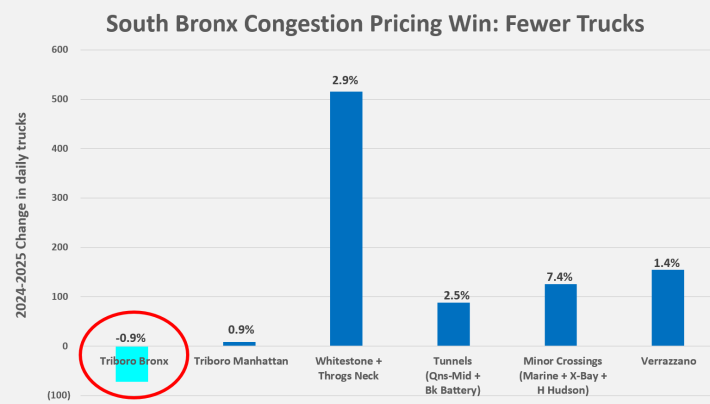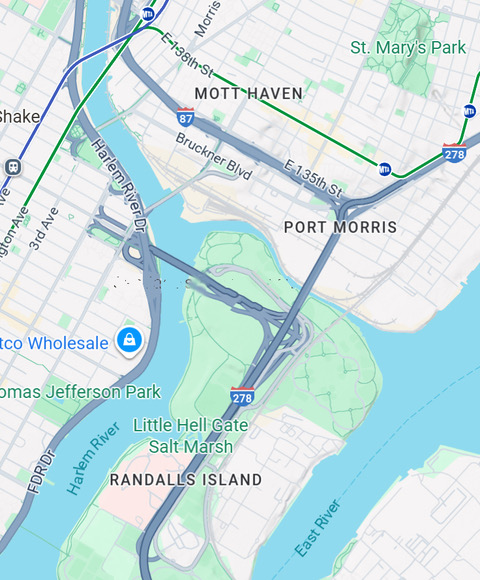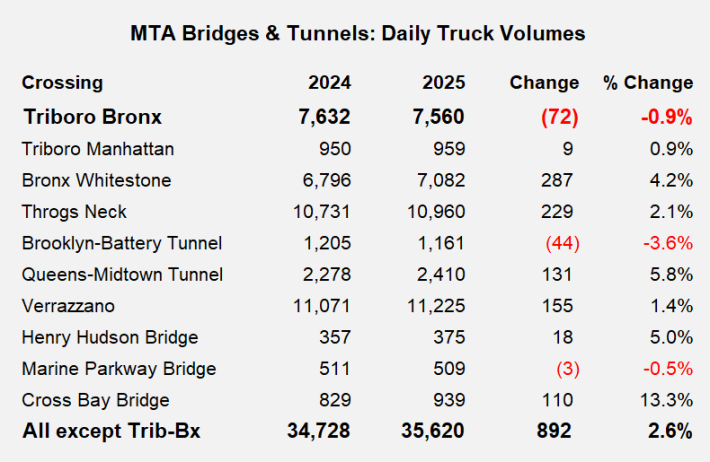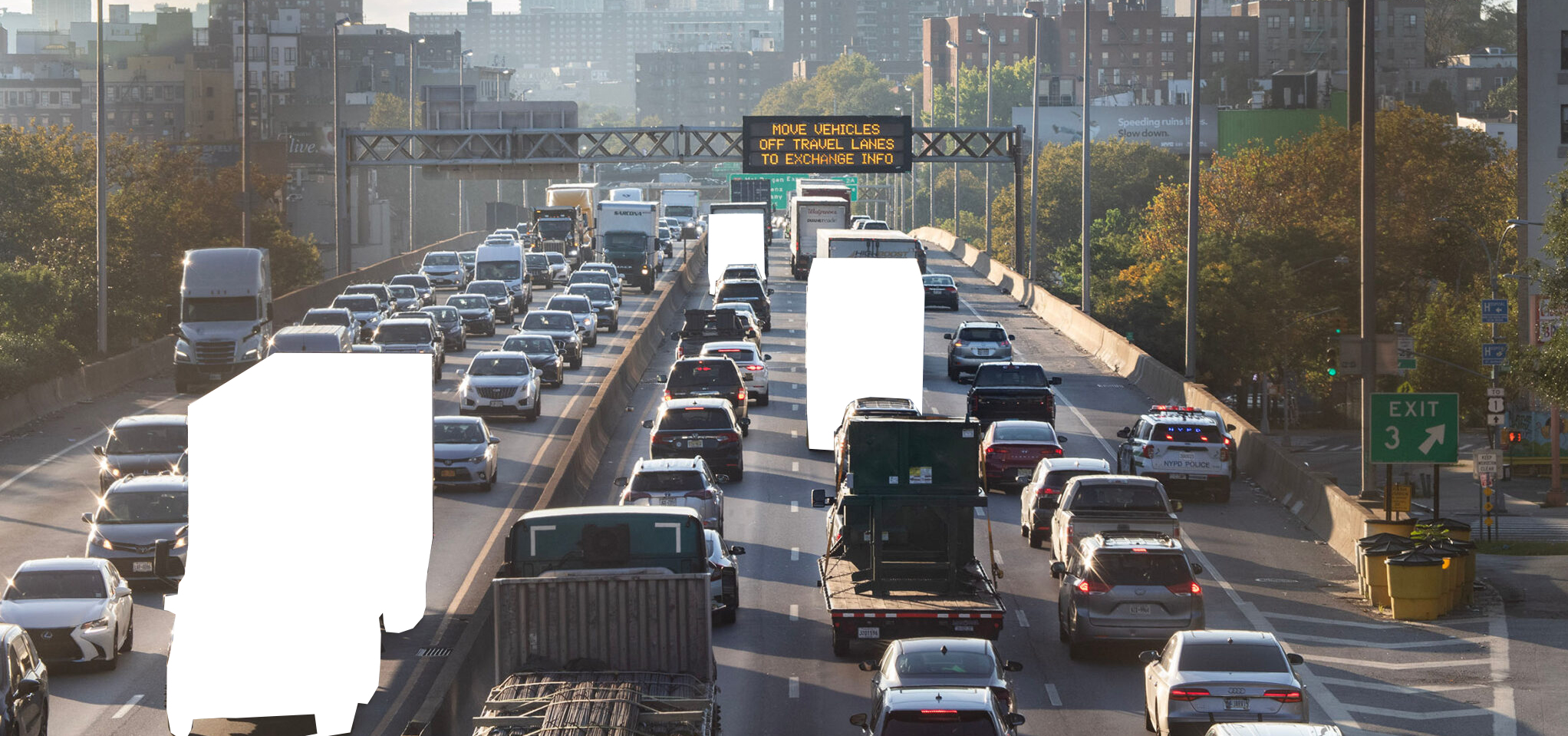Truck traffic on the Bronx leg of the Triboro Bridge is down this year, belying forewarnings that congestion pricing would funnel trucks into and through the embattled South Bronx communities of Mott Haven and Port Morris, compounding endemic pollution, noise and road danger.
Truck traffic, of course, is the heart of darkness on urban streets — its tailpipe emissions, tire and brake abrasion, and sheer bulk sicken and kill. But congestion pricing, which began on Jan. 5, has been good news for the beaten-up neighborhoods.
The latest data show that 72 fewer trucks are using the Bronx span of the Triboro Bridge on the average day between Jan. 6, 2025 and Aug. 26, compared to the same period a year ago. That is a slight decrease, but it again dispels some people's prediction that there would be large-scale traffic diversion from Manhattan — and the decrease comes during a period of increased traffic observed on most other MTA tolled crossings:

Mott Haven and Port Morris are bisected by two expressways (I-87 and I-278) carrying massive traffic to and from the Bronx leg of the Triboro, including 7,500 trucks per day. Yet this Streetsblog exclusive finding of a drop in those volumes debunks congestion pricing doomsaying, as the legendary traffic engineer "Gridlock" Sam Schwartz did with preliminary data back in March.
Drilling down

The MTA operates nine bridges and tunnels in the city — 10 if we separate the flagship RFK-Triboro Bridge’s Manhattan and Bronx sections. Seven of the 10 are registering upturns in truck traffic this year, most likely due to the expanding city and regional economy and burgeoning demand for consumer goods and home delivery. The only crossings with reduced volumes this year are the Brooklyn-Battery Tunnel, the Marine Park Bridge in southern Queens, and what I’ll call Triboro-Bronx.
And the reduction in truck volumes on the Triboro-Bronx exceeds that of the other two combined.
In percentage terms, the Triboro-Bronx truck traffic drop is 0.9 percent. Lest that feel trivial, consider that the other nine crossings combined are experiencing a 2.6-percent increase in truck volumes so far this year. We can’t say for sure — yet — but the bulk of the shrinkage is probably attributable to congestion pricing, in line with my 2022 prediction that toll-caused reductions in trips into the priced zone would percolate through the region.

The new data were downloaded for me from an MTA Bridges & Tunnels data portal by Kelly McGuinness, data-savvy associate of Schwartz and director of the new Sam Schwartz Program for Transportation Research at Hunter College.
The latest data follow my Sept. 8 post (with data scientist Todd Schneider) that relied on travel speed data from over 30,000 Uber trips in Mott Haven and Port Morris. Schneider and I discovered that travel speeds on neighborhood streets had dropped by a minuscule 0.5 percent, implying no discernible change in overall traffic volumes and, therefore no addition congestion or pollution above what Bronx residents have long suffered from.
Make no mistake: a century of dumping on the Bronx need to be rectified, but the growing body of evidence shows that congestion pricing isn't making it worse. If anything, the congestion tolls are helping Mott Haven and Port Morris, and the gain will only grow bigger as the $9 toll kicks up to $12 and $15 and the tolls deliver to the Bronx the full promise of congestion pricing: faster trains, accessible stations and electric buses.






